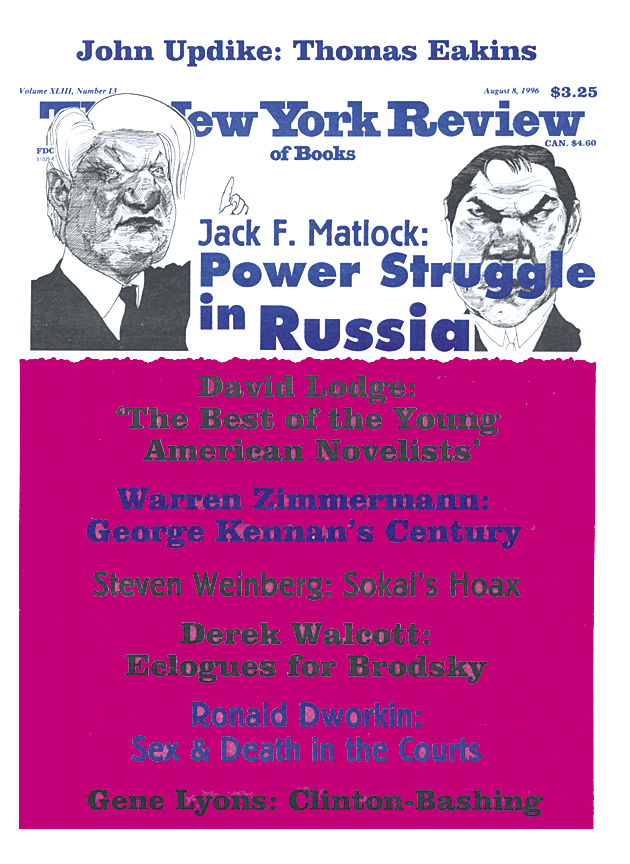In response to:
Star from the June 20, 1996 issue
To the Editor:
While I enjoyed reading Fiona MacCarthy’s perceptive review of my biography of Lola Montez [NYR, June 20], I must protest her statement that my “attempts at imagined dialogue are particularly jarring.” So much of my research was directed toward separating the inventions of Lola’s fertile imagination from the facts that I feel compelled to make it completely clear that my own imagination contributed nothing to the content of her story.
As I explain in my preface to the book, I made a very scrupulous effort to invent nothing in my biography (other than a bit of extrapolation in the opening four paragraphs) and to base it as much as possible on primary source materials. Dialogue appears very rarely simply because parties to a conversation seldom leave verbatim accounts. Nevertheless, in a few instances I did have firsthand accounts of conversations, written not long after they took place and purporting to reproduce the actual words spoken.
It was a coincidence that three of these sources for dialogue concerned events recounted at the beginning of Chapter 14 of my book, which is, I suspect, where Ms. MacCarthy found the dialogue so jarring. One source was a memorandum left by Baron von Pechmann, the Munich police commissioner, quoted at length in Karl Müller’s Am Rand der Geschichte; another was a letter of King Ludwig himself recounting his conversation with the police spy Frau Ganser, quoted in Egon Corti’s biography of the King; and the third was a memorandum written by Baron von Heideck, the King’s friend and Lola’s reluctant adviser, quoted extensively in Wilhelm Kristl’s Lola, Ludwig und der General. Each of these items is cited in the source notes for these pages.
The conversation between the king and Baron von Pechmann is indeed jarring because I believe the Baron was very conscientious about accurately reproducing the King’s language and his own. King Ludwig was notorious for being not merely colloquial and disjointed in conversation but frequently scurrilous as well. Baron von Pechmann’s extremely formal language to the King, as he himself reported it, contrasts almost too vividly with the informal, rambling ripostes of King Ludwig, but I believe the Baron, who subsequently became a highly regarded Bavarian cabinet minister, probably did an exemplary job of recording his audience with the King. The few other instances of dialogue in the book come from newspaper reports of testimony in the Dujarier murder trial and of Lola’s appearance as a witness in a New York case.
Even if I had been tempted to fictionalize details in Lola’s story, I doubt I could have matched her own uninhibited inventiveness. The facts, I discovered, make the best story of all, and that is what I have tried to tell in my book.
Bruce Seymour
Piedmont, California
Fiona MacCarthy replies:
I was not accusing Bruce Seymour of fabrication but of artistic misjudgment in interpolating these creaky passages of dialogue when a paraphrase would have been much more effective. I think I make this clear in my review.
This Issue
August 8, 1996


